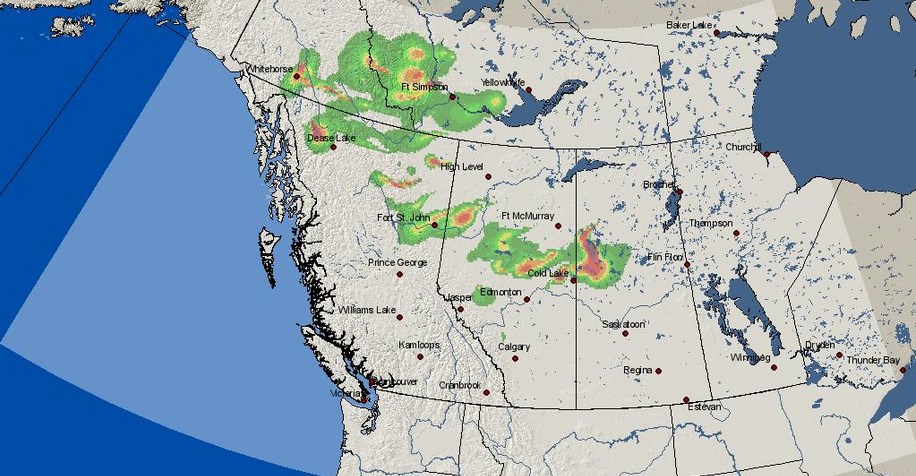Wildfire smoke is currently blowing into the Lac La Biche area from two nearby out-of-control fires: one over 17,000 hectares in size in the Cold Lake Air Weapons Range to the east, and one over 1,000 hectares in size to the north near Conklin. The fires themselves, however, are not currently moving toward inhabited areas.
Wildfire smoke is currently blowing into the Lac La Biche area from two nearby out-of-control fires: one over 17,000 hectares in size in the Cold Lake Air Weapons Range to the east, and one over 1,000 hectares in size to the north near Conklin. The fires themselves, however, are not currently moving toward inhabited areas.
According to Janelle Lane, a provincial wildfire information officer, the smoke present in the Lac La Biche area is likely blowing in from the Cold Lake Air Weapons Range fire - approximately 100 kilometres east of the hamlet of Lac La Biche.
"Those [the CLAWR and Conklin-area fires] are producing the most amount of smoke, we're very aware and have firefighters on them," said Lane.
At the CLAWR fire, Lane said one small area of burning escaped the fire guard in place yesterday, but air tankers immediately extinguished it. No flames have jumped the southern perimeter fire guard yet, and the fire is not moving toward inhabited areas.
While the fire is currently 15 kilometres away from Cenovus' Foster Creek oilfield operation, it does threaten the only road in and out, which is why Cenovus has shut down the plant.
"Smoke is definitely something people don't want to see, but it's part of fighting these wildfires," she said.
Alberta Health Services has put the entire North Zone under an air quality advisory, and advises people to exercise caution when wildfire smoke is present.
The agency urges people to minimize physical activity outdoors and remain indoors with windows, doors and vents closed. When driving, air should be recirculated within the vehicle if possible.
Respiratory conditions like COPD and asthma may be exacerbated by smoke in the air. Additional questions can be directed to the Health Link Alberta line at 1.866.408.LINK.
More information is available through our overall update on Alberta's wildfire situation and our story on the weather conditions that led to so many fires.
Additional wildfire information from provincial authorities is available at www.wildfire.alberta.ca, or through the Alberta Wildfire smartphone app. Forecasts of the direction of wildfire smoke are available online at www.firesmoke.ca.
